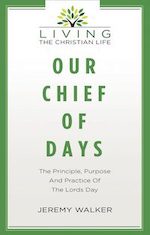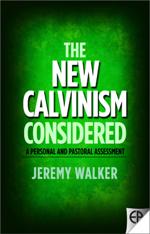An outline of the life of John Calvin #1 The early years
(Part 1, Part 2, Part 3) (Listen here or a slightly developed version here)
It is 500 years since God brought John Calvin into this world. During 2009, many Reformed churches and Christians in particular are remembering with gratitude this gift of Christ to his church. Publishing houses are producing books at a rapid pace of knots, articles, papers, conferences, and website and blog postings proliferate. But who was he? Perhaps for some who would or should know about this man of God, he is little more than a name on the pages of history: we are aware of him, but we do not know him. This brief biography is intended to provide an outline of his life sufficient to provide men and women of the Reformed and other traditions with some notion and understanding of the man we are remembering.
 John Calvin was born on 10 July 1509, in a place called Noyon (about sixty miles north-east of Paris) in the province of Picardy (the wide, flat region in which the First World War’s Battle of the Somme would later be fought). His father – Gérard Cauvin – held legal office in the service of the bishops of Noyon, and wanted his son to enter the church, an environment that had seen its fair share of storms in past decades, and would soon grow far stormier still. Martin Luther was 26 years old in 1509, and already teaching at Wittenberg; Ulrich Zwingli was only two months younger than Luther. Philip Melancthon was twelve years older than Calvin. Henry VIII ascended to the English throne in the year of his birth. In 1517, when Calvin was only eight years old, Luther would post his Ninety-Five Theses on the door of the Castle Church.
John Calvin was born on 10 July 1509, in a place called Noyon (about sixty miles north-east of Paris) in the province of Picardy (the wide, flat region in which the First World War’s Battle of the Somme would later be fought). His father – Gérard Cauvin – held legal office in the service of the bishops of Noyon, and wanted his son to enter the church, an environment that had seen its fair share of storms in past decades, and would soon grow far stormier still. Martin Luther was 26 years old in 1509, and already teaching at Wittenberg; Ulrich Zwingli was only two months younger than Luther. Philip Melancthon was twelve years older than Calvin. Henry VIII ascended to the English throne in the year of his birth. In 1517, when Calvin was only eight years old, Luther would post his Ninety-Five Theses on the door of the Castle Church.
Calvin’s father used his influence to obtain for his son a chaplaincy at Noyon Cathedral when Calvin was 11 (a far from rare practice), and the income helped to fund his education. The brilliant young man was privately tutored, before being sent to Paris at the age of 14 to study theology at the University. He first attended the Collège de la Marche, then the Collège de Montaigu, where he received the equivalent of his Master of Arts in 1528 at the unusually young age of 17. In God’s kindness, some of Calvin’s fundamental instruction was given by the brilliant Latin scholar Mathurin Cordier, and he obtained a first-class education.
At about the same time as he received his M.A., Calvin’s father changed his mind about his son’s future, and directed him from theology to study law at the University of Orléans. It was here that Calvin learned Greek, and developed his powers of analysis and rhetoric – not unhelpful skills for a man whom God was making a minister of the gospel. Within a year, Calvin was sufficiently advanced to begin teaching incoming scholars.
He moved on to Bourges in about 1529, returning to Noyon for the burial of his father, who had died quite suddenly. Released from his father’s seemingly quite heavy governance, Calvin spread his wings as a humanist, publishing his first and only humanist work at the age of 23, a commentary on the younger Seneca’s De Clementia (On Mercy). There is little evidence there of any Christian thought, but much of a brilliant mind and a firm grasp on a wide range of classical and historical source material. In the same year, 1532, he received his doctor of laws degree. Calvin’s fierce dedication to study during these years was near-legendary, but almost certainly laid the foundation for his subsequent struggle with ill-health.
But this was a significant year for more reasons than these: Calvin had been exposed to some of Luther’s teachings, which were by then widely circulated. His own cousin, Jean Pierre Olivétan, had been attracted to Lutheran teaching, and Calvin had studied alongside Olivétan for a period. But where and when, in the midst of all this, did God give Calvin a heart of flesh?
There is no reference to a human agent nor to a definite moment in the only plain record of this event known to come from Calvin’s own pen, which I give in a translation furnished by Robert Reymond. It comes from Calvin’s “Preface” to his Commentary on the Psalms:
I tried my best to work hard [in the study of law], yet God at last turned my course in another direction by the secret rein of his providence. What happened first, since I was too obstinately addicted to the superstitions of Popery to be easily extricated from so profound an abyss of mire, was that God by an unexpected [or ‘sudden’] conversion [subite conversione] subdued and reduced my mind to a teachable frame. And so this taste of true godliness . . . set me on fire with such a desire to progress that I pursued the rest of my studies [in law] more coolly, although I did not give them up altogether.
Scholarly debate continues from all sides of the historical and religious spectrum as to the occasion, speed, and possible catalysts of Calvin’s conversion. It does seem to have happened rapidly, although there are some evidences of and possible references to a longer preparatory period. What we can say is that once it had occurred, there was no looking back. With his customary tenacity and vigour of mind and heart, Calvin embraced the new teachings that accorded with the Word of the living God, and his life was never again the same. So complete was the transformation that when his friend, Nicholas Cop, Rector of the University of Paris, delivered an address advocating reform of the church on All Saints’ Day of 1533, many thought that Calvin might be the true author of the piece (and it is possible that this was the case). Not only did Cop have to flee, but Calvin himself was lowered by sheets from a window and escaped the city dressed as a manual labourer.
Calvin travelled on, finding rest where he could, and already being tracked down by friends (as well as hunted by foes) because of his gifts and understanding. He studied the Scriptures, and by May 1534 had resigned his holdings in the Roman Catholic church. By 1535 he was forced to leave France altogether, departing from the relative safety and scholarly enjoyments of a place called Angoulême, and heading to Basel in Switzerland. There he wrote the preface for the French translation of the Bible made by his cousin Olivétan. In France, some of Calvin’s dear friends were already dying in martyr’s fires at the hands of Francis I of France. By 1536 Calvin had completed and published the first edition of what has become known as Protestantism’s magnum opus, his Institutio Christianae Religionis, or The Institutes of the Christian Religion. Repeatedly revised and expanded to its final form, this was originally a fairly brief outline of the true Christian faith designed to demonstrate to the persecuting French monarch the realities of the belief and lives of the Protestants of France (it was, in fact, dedicated to Francis I, opening with an extensive letter to the king). At the young age of 26, Calvin’s grasp on the fullness of God’s revelation, and his genius for precise statement and comprehensive organization and systematization of the truth, were becoming more publicly evident.
Later that year Calvin moved on again to Italy with a friend, du Tillet, whose home at Angoulême had provided a temporary French hiding place. A brief return to Paris followed, before Calvin headed to Strasbourg in July of 1536, determined to live a life with his head among his beloved books. Avoiding a raging war between Francis I and Charles V of Spain, he took a long detour south, arriving in Geneva for an overnight stay.
(Part 1, Part 2, Part 3) (Listen here or a slightly developed version here)


















By all means, consider chipping in . . .